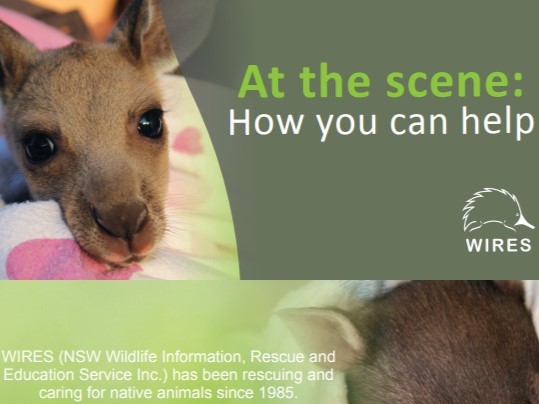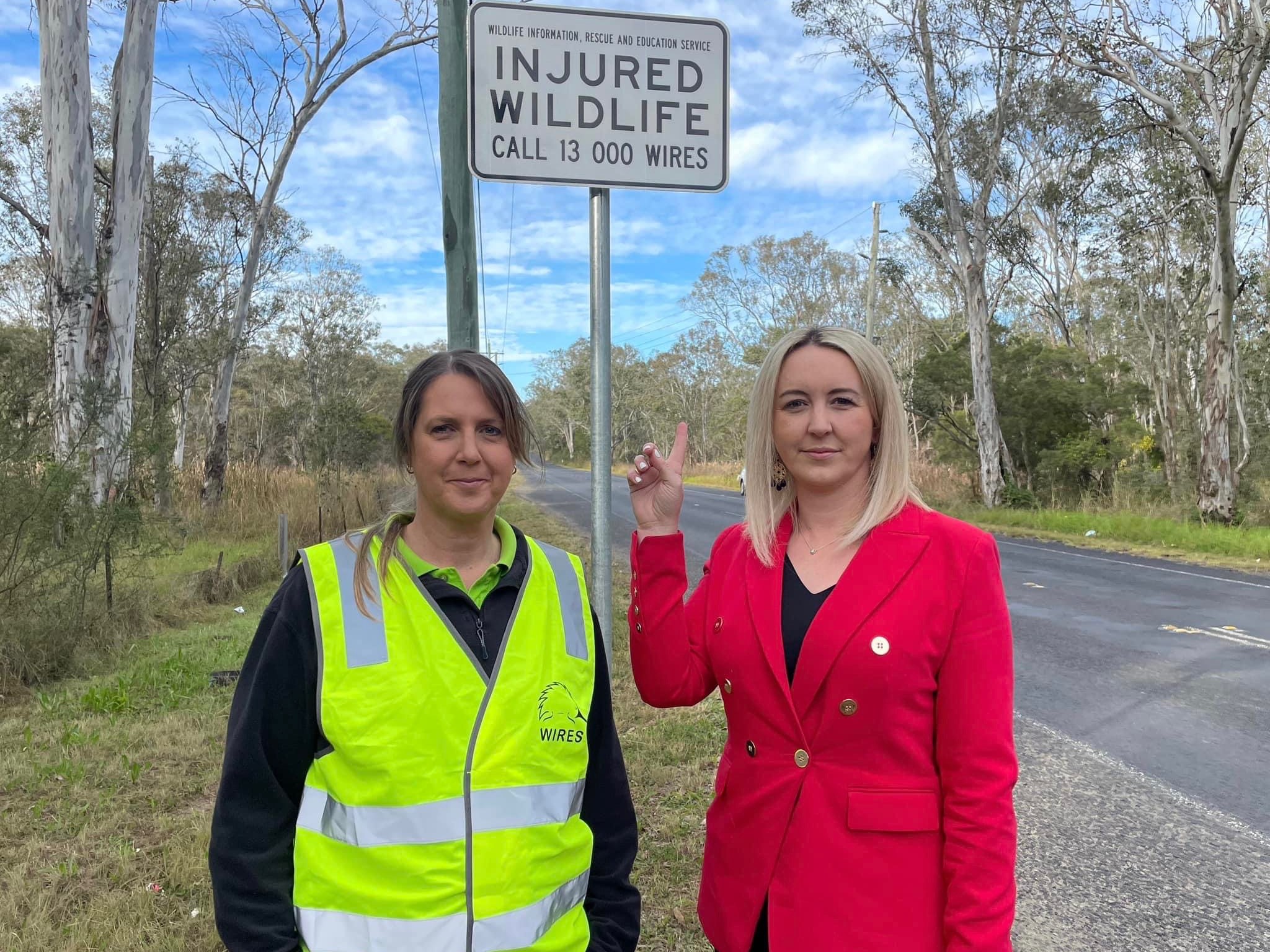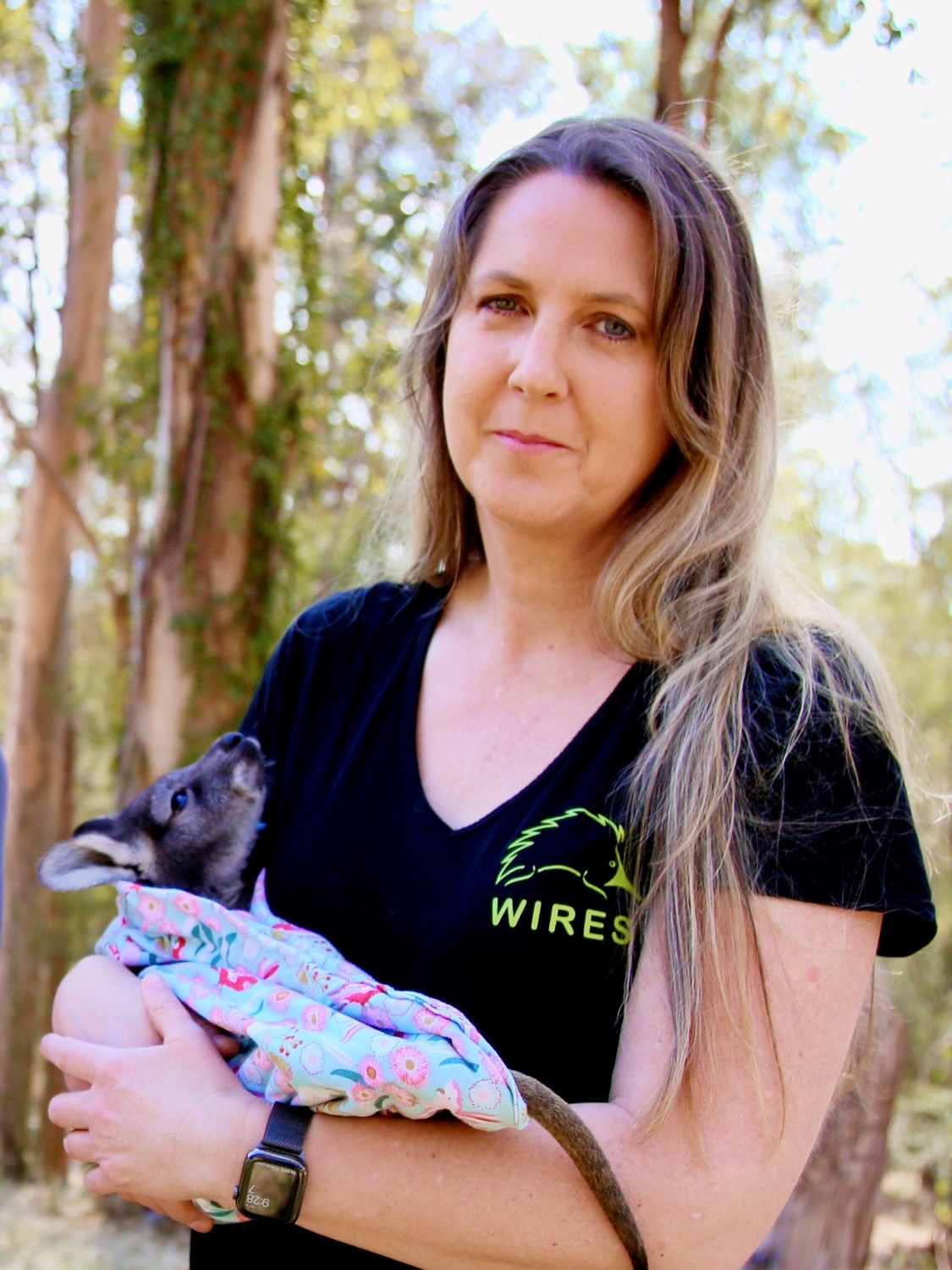
Driving safely to protect our wildlife
24 April 2024
 Hawkesbury City Council is joining with WIRES to raise awareness in the Hawkesbury about preventing injuries and fatalities of native animals and treating native animals that are injured.
Hawkesbury City Council is joining with WIRES to raise awareness in the Hawkesbury about preventing injuries and fatalities of native animals and treating native animals that are injured.
Key steps to help our wildlife:
- Give way to wildlife
- Be prepared
- Locate surviving joeys
- Prevent further accidents
- Put WIRES in your contacts – 1300 094 737
With autumn upon us and winter days ahead, more people will be driving in times of lower light when many native animals are most active.
This places native animals at higher risk but there are things you can do to reduce the danger to our precious wildlife. The Mayor of Hawkesbury, Councillor Sarah McMahon is encouraging all road users to always drive safely and to be extra vigilant on the roads in low light conditions and especially at dusk and dawn.
“If we drive with caution on both rural and urban roads, we’ll not only help to protect ourselves and other people, but also native animals such as wombats, echidnas, koalas, kangaroos, wallabies, reptiles, possums and more,” Mayor McMahon said.
“We are so lucky to live in the Hawkesbury where we have national parks and many rural areas with native animals. But with this privilege comes a responsibility to protect them.
“We also have warning signs installed in various areas of the Hawkesbury to encourage drivers to be aware of native animals on our roads and to be alert and slow down.”
For safe driving tips, please see www.transport.nsw.gov.au/roadsafety/road-users/drivers/animals

Anne Marks, Macropod Coordinator for WIRES Hawkesbury Branch is one of the local volunteers who attends animal rescue calls at all hours of the day and night. Anne is also encouraging motorists to please help our native animals by driving carefully in known wildlife areas.
“It is especially important to be vigilant in the early mornings when it is darker and often foggy. It’s also important in the late afternoon and through the night when so many of our nocturnal native animals are moving about seeking food and water,” Anne said.
“Please drive to the conditions and expect the unexpected as wildlife is not road savvy. Whenever possible to safely do so, give way to wildlife”.
Be prepared
You can keep these items in your vehicle to be prepared to help native wildlife: towel, torch, cardboard box, pillowcase, hand sanitiser.
Locating surviving joeys
 As well as driving safely to prevent wildlife casualties, Anne suggests providing early emergency assistance to any pouch young of injured wildlife.
As well as driving safely to prevent wildlife casualties, Anne suggests providing early emergency assistance to any pouch young of injured wildlife.
“Unfortunately, even with careful driving, wildlife car strikes can still happen. Please stop if safe to do so and check if the animal requires emergency assistance,” Anne said.
“We advise wearing high-vis or bright clothing when possible, to ensure you can be seen by other motorists. Always approach any animal with care as they can be in shock after a car strike and could behave aggressively if injured.”
Contact WIRES on 1300 094 737 for advice on how to check a pouch, especially before attempting to remove any tiny pink joeys still on the teat as this needs to be done by an experienced rescuer. Also check nearby areas for joeys that may have been thrown from the pouch and please note they need to be kept warm and quiet while you call WIRES or a nearby vet for help. Following vet assessment, native animals require specialist rehabilitation care from licensed wildlife carers as soon as possible.
If it is difficult or unsafe to stop and check pouches, please notify WIRES of the location (note the GPS coordinates and/or mark the location with a stick or other suitable item).
During peak periods when phone lines may be busy, you can also use the report-a-rescue form www.wires.org.au/report-a-rescue to report wildlife emergencies online. Please note that all other forms of WIRES contact, including Facebook, are not monitored for rescues.
Prevent further accidents
Deceased animals attract other native wildlife. This includes Lace Monitors (Goannas) and Raptors such as our protected Wedge-tailed Eagles which then are also at risk of car strike. If safe to do so, put on your hazard lights and move the deceased animal well away from the road. If possible, tie a ribbon, or something similar, to the animal’s foot to signal that it has been checked for pouch young. Report deceased animals to WIRES (to collect statistics on high-risk collision areas and species numbers, and to ensure the pouch has been checked adequately). Call Council for removal from public roads on 4560 4444.
“WIRES volunteers help and rescue many native animals – if you can help by also making a donation to WIRES, please do,” Mayor McMahon added.
WIRES (NSW Wildlife Information, Rescue and Education Service Inc.) has been rescuing and caring for native animals since 1985. You can help save Australia’s native wildlife in the Hawkesbury region by donating at https://fundraiseforwildlife.wires.org.au/hawkesbury (Hawkesbury branch specific link) or by calling WIRES on 1300 094 737.
Read the WIRES driver brochure www.wires.org.au/assets/modules/homepage/files/driver-brochure.pdf to find out more.
For more information about WIRES please visit www.wires.org.au
Page ID: 258481
